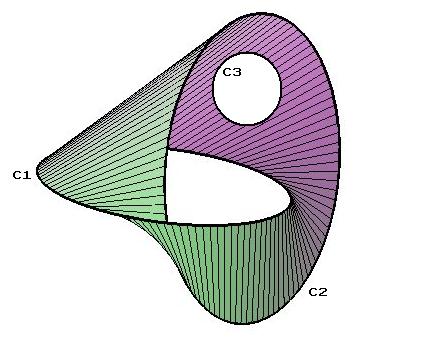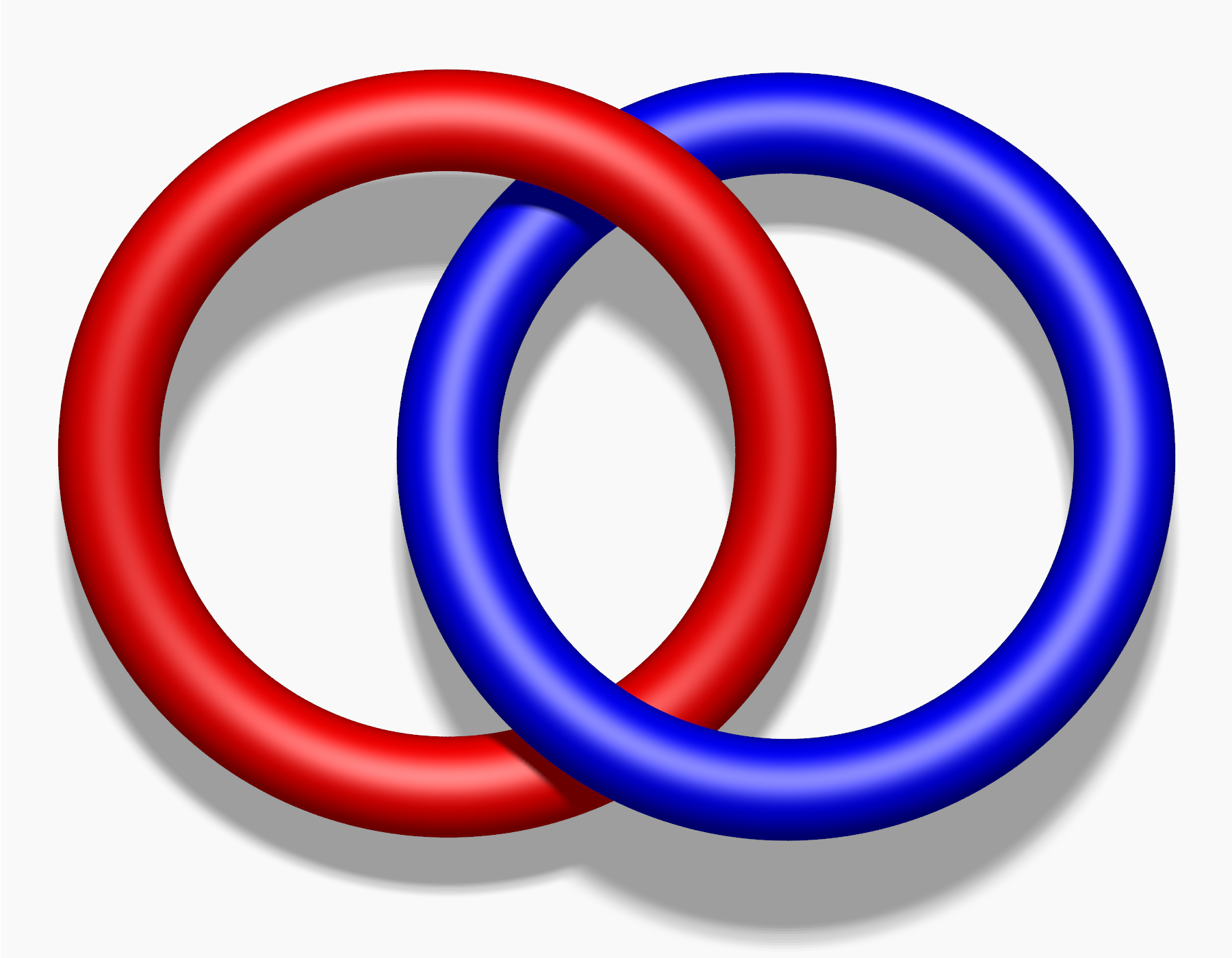|
Knots Unravelled
''Knots Unravelled: From String to Mathematics'' is a book on the mathematics of knots, intended for schoolchildren and other non-mathematicians. It was written by mathematician Meike Akveld and mathematics publisher Andrew Jobbings. It was published in 2011 by Arbelos, Jobbings's firm. Topics The main problem studied in the book is the use of knot invariants to test whether a loop is knotted or distinguish knots from each other. It has seven short chapters, separated by "interludes" providing examples including Celtic knots, knotted papercraft, neckties, ropework, torus knots, and a form of the trefoil knot that can only sit on a plane with two points in contact. Small exercises, called "tasks" and often involving practical experiments rather than mathematical calculation, are scattered throughout the book, with answers at the end. The first chapter is introductory, and the second describes knot diagrams and the Reidemeister moves that change one diagram to another without cha ... [...More Info...] [...Related Items...] OR: [Wikipedia] [Google] [Baidu] |
Chirality
Chirality () is a property of asymmetry important in several branches of science. The word ''chirality'' is derived from the Greek (''kheir''), "hand", a familiar chiral object. An object or a system is ''chiral'' if it is distinguishable from its mirror image; that is, it cannot be superposed (not to be confused with superimposed) onto it. Conversely, a mirror image of an ''achiral'' object, such as a sphere, cannot be distinguished from the object. A chiral object and its mirror image are called '' enantiomorphs'' (Greek, "opposite forms") or, when referring to molecules, ''enantiomers''. A non-chiral object is called ''achiral'' (sometimes also ''amphichiral'') and can be superposed on its mirror image. The term was first used by Lord Kelvin in 1893 in the second Robert Boyle Lecture at the Oxford University Junior Scientific Club which was published in 1894: Human hands are perhaps the most recognized example of chirality. The left hand is a non-superposable mirror ... [...More Info...] [...Related Items...] OR: [Wikipedia] [Google] [Baidu] |
Popular Mathematics Books
Popularity or social status is the quality of being well liked, admired or well known to a particular group. Popular may also refer to: In sociology * Popular culture * Popular fiction * Popular music * Popular science * Populace, the total population of a certain place ** Populism, a political philosophy, based on the idea that the common people are being exploited. * Informal usage or custom, as in popular names, as opposed to formal or scientific nomenclature Companies * Popular, Inc., also known as ''Banco Popular'', a financial services company * Popular Holdings, a Singapore-based educational book company * The Popular (department store), a chain of department stores in El Paso, Texas, from 1902 to 1995 Media Music * "Popular" (Darren Hayes song) (2004), on the album ''The Tension and the Spark'' * "Popular" (Eric Saade song) (2011), on the album ''Saade Vol. 1'' * "Popular" (M.I.A. song) (2022), from the album ''Mata'' * "Popular" (Nada Surf song) (1996), on ... [...More Info...] [...Related Items...] OR: [Wikipedia] [Google] [Baidu] |
Mathematical Association Of America
The Mathematical Association of America (MAA) is a professional society that focuses on mathematics accessible at the undergraduate level. Members include university A university () is an educational institution, institution of tertiary education and research which awards academic degrees in several Discipline (academia), academic disciplines. ''University'' is derived from the Latin phrase , which roughly ..., college, and high school teachers; graduate and undergraduate students; pure and applied mathematicians; computer scientists; statisticians; and many others in academia, government, business, and industry. The MAA was founded in 1915 and is headquartered at 11 Dupont in the Dupont Circle, Washington, D.C., Dupont Circle neighborhood of Washington, D.C. The organization publishes mathematics journals and books, including the ''American Mathematical Monthly'' (established in 1894 by Benjamin Finkel), the most widely read mathematics journal in the world according to re ... [...More Info...] [...Related Items...] OR: [Wikipedia] [Google] [Baidu] |
The Mathematical Gazette
''The Mathematical Gazette'' is a triannual peer-reviewed academic journal published by Cambridge University Press on behalf of the Mathematical Association. It covers mathematics education with a focus on the 15–20 years age range. The journal was established in 1894 by Edward Mann Langley as the successor to the ''Reports of the Association for the Improvement of Geometrical Teaching''. William John Greenstreet was its editor-in-chief for more than thirty years (1897–1930). Since 2000, the editor is Gerry Leversha. Editors-in-chief The following persons are or have been editor-in-chief: Abstracting and indexing The journal is abstracted and indexed in EBSCO databases, Emerging Sources Citation Index, Scopus Scopus is a scientific abstract and citation database, launched by the academic publisher Elsevier as a competitor to older Web of Science in 2004. The ensuing competition between the two databases has been characterized as "intense" and is c ..., and zbMA ... [...More Info...] [...Related Items...] OR: [Wikipedia] [Google] [Baidu] |
MathSciNet
MathSciNet is a searchable online bibliographic database created by the American Mathematical Society in 1996. It contains all of the contents of the journal ''Mathematical Reviews'' (MR) since 1940 along with an extensive author database, links to other MR entries, citations, full journal entries, and links to original articles. It contains almost 3.6 million items and over 2.3 million links to original articles. Along with its parent publication ''Mathematical Reviews'', MathSciNet has become an essential tool for researchers in the mathematical sciences. Access to the database is by subscription only and is not generally available to individual researchers who are not affiliated with a larger subscribing institution. For the first 40 years of its existence, traditional typesetting was used to produce the Mathematical Reviews journal. Starting in 1980 bibliographic information and the reviews themselves were produced in both print and electronic form. This formed the basis of ... [...More Info...] [...Related Items...] OR: [Wikipedia] [Google] [Baidu] |
Elemente Der Mathematik
''Elemente der Mathematik'' is a peer-reviewed scientific journal covering mathematics. It is published by the European Mathematical Society Publishing House on behalf of the Swiss Mathematical Society. It was established in 1946 by Louis Locher-Ernst, and transferred to the Swiss Mathematical Society in 1976. Rather than publishing research papers, it focuses on survey papers aimed at a broad audience. History The journal ''Elemente der Mathematik'' was founded in 1946 by Louis Locher-Ernst under the patronage of the Swiss Mathematical Society (SMG) to disseminate pedagogical and expository articles in mathematics and physics. Locher-Ernst outlined the scope and objectives—emphasising support for secondary and tertiary instruction—in a letter to the SMG president in August 1945 and at the autumn members' meeting in Fribourg later that year. Early editorial responsibilities were assumed by Locher-Ernst alongside Erwin Voellmy, Ernst Trost and Paul Buchner, while an ... [...More Info...] [...Related Items...] OR: [Wikipedia] [Google] [Baidu] |
ZbMATH
zbMATH Open, formerly Zentralblatt MATH, is a major reviewing service providing reviews and abstracts for articles in pure and applied mathematics, produced by the Berlin office of FIZ Karlsruhe – Leibniz Institute for Information Infrastructure GmbH. Editors are the European Mathematical Society, FIZ Karlsruhe, and the Heidelberg Academy of Sciences. zbMATH is distributed by Springer Science+Business Media. It uses the Mathematics Subject Classification codes for organising reviews by topic. History Mathematicians Richard Courant, Otto Neugebauer, and Harald Bohr, together with the publisher Ferdinand Springer, took the initiative for a new mathematical reviewing journal. Harald Bohr worked in Copenhagen. Courant and Neugebauer were professors at the University of Göttingen. At that time, Göttingen was considered one of the central places for mathematical research, having appointed mathematicians like David Hilbert, Hermann Minkowski, Carl Runge, and Felix Klein, the ... [...More Info...] [...Related Items...] OR: [Wikipedia] [Google] [Baidu] |
Jones Polynomial
In the mathematical field of knot theory, the Jones polynomial is a knot polynomial discovered by Vaughan Jones in 1984. Specifically, it is an invariant of an oriented knot or link which assigns to each oriented knot or link a Laurent polynomial in the variable t^ with integer coefficients. Definition by the bracket Suppose we have an oriented link L, given as a knot diagram. We will define the Jones polynomial V(L) by using Louis Kauffman's bracket polynomial, which we denote by \langle~\rangle. Here the bracket polynomial is a Laurent polynomial in the variable A with integer coefficients. First, we define the auxiliary polynomial (also known as the normalized bracket polynomial) :X(L) = (-A^3)^\langle L \rangle, where w(L) denotes the writhe of L in its given diagram. The writhe of a diagram is the number of positive crossings (L_ in the figure below) minus the number of negative crossings (L_). The writhe is not a knot invariant. X(L) is a knot invariant si ... [...More Info...] [...Related Items...] OR: [Wikipedia] [Google] [Baidu] |
Link (knot Theory)
In mathematical knot theory, a link is a collection of knots that do not intersect, but which may be linked (or knotted) together. A knot can be described as a link with one component. Links and knots are studied in a branch of mathematics called knot theory. Implicit in this definition is that there is a ''trivial'' reference link, usually called the unlink, but the word is also sometimes used in context where there is no notion of a trivial link. For example, a co-dimension 2 link in 3-dimensional space is a subspace of 3-dimensional Euclidean space (or often the 3-sphere) whose connected components are homeomorphic to circles. The simplest nontrivial example of a link with more than one component is called the Hopf link, which consists of two circles (or unknots) linked together once. The circles in the Borromean rings are collectively linked despite the fact that no two of them are directly linked. The Borromean rings thus form a Brunnian link and in fact constitu ... [...More Info...] [...Related Items...] OR: [Wikipedia] [Google] [Baidu] |
Tricolorability
In the mathematical field of knot theory, the tricolorability of a knot is the ability of a knot to be colored with three colors subject to certain rules. Tricolorability is an isotopy invariant, and hence can be used to distinguish between two different (non- isotopic) knots. In particular, since the unknot is not tricolorable, any tricolorable knot is necessarily nontrivial. Rules of tricolorability In these rules a strand in a knot diagram will be a piece of the string that goes from one undercrossing to the next. A knot is tricolorable if each strand of the knot diagram can be colored one of three colors, subject to the following rules:Weisstein, Eric W. (2010). ''CRC Concise Encyclopedia of Mathematics'', Second Edition, p.3045. . quoted at Accessed: May 5, 2013. :1. At least two colors must be used, and :2. At each crossing, the three incident strands are either all the same color or all different colors. Some references state instead that all three colors must be used.Gi ... [...More Info...] [...Related Items...] OR: [Wikipedia] [Google] [Baidu] |
Composite Knot
In knot theory, a prime knot or prime link is a knot that is, in a certain sense, indecomposable. Specifically, it is a non- trivial knot which cannot be written as the knot sum of two non-trivial knots. Knots that are not prime are said to be composite knots or composite links. It can be a nontrivial problem to determine whether a given knot is prime or not. A family of examples of prime knots are the torus knots. These are formed by wrapping a circle around a torus ''p'' times in one direction and ''q'' times in the other, where ''p'' and ''q'' are coprime integers. Knots are characterized by their crossing numbers. The simplest prime knot is the trefoil with three crossings. The trefoil is actually a (2, 3)-torus knot. The figure-eight knot, with four crossings, is the simplest non-torus knot. For any positive integer ''n'', there are a finite number of prime knots with ''n'' crossings. The first few values for exclusively prime knots and for prime ''or'' composite kn ... [...More Info...] [...Related Items...] OR: [Wikipedia] [Google] [Baidu] |

